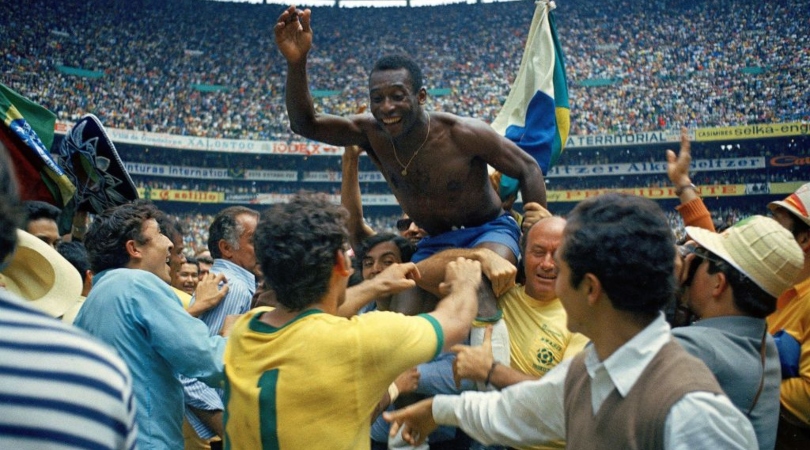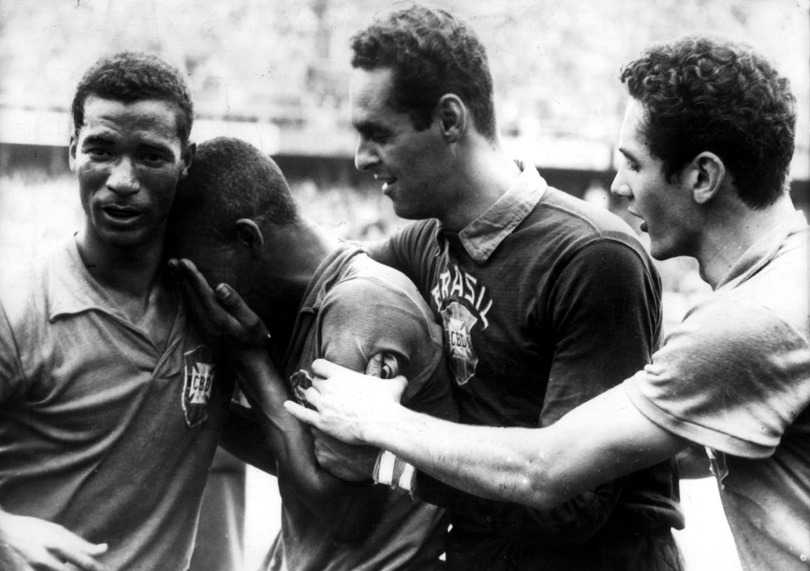The footballer who could bring war to a standstill: remembering Pele
Football's most iconic player, revered from South America to Europe, from the USA to Africa, Pele was the player above all others who made the World Cup the tournament it is today

Football legend Pele has died at the age of 82. This article was first published in 2017 as part of FourFourTwo's list of the best footballers ever
“F***, Brazil lost the World Cup,” said the nine-year-old Edson Arantes do Nascimento as he noticed his father was crying after the national team lost the 1950 World Cup to Uruguay.
The boy who worked as a shoe-shiner back then never forgot that day.
Named after inventor Thomas Edison, Edson was proud of his name but couldn’t avoid the bullying from a classmate who insisted on calling him Pele – he hated it because he thought it sounded too childlike. He ended up punching his tormentor and got suspended from school for two days. When he returned to class, he was not Edson anymore, he was Pele to everyone. And he should thank his schoolmate for this – because Brazilians usually say that Edson and Pele are two different people.
They will always love Pele, but when it comes to Edson it’s not the same.
The complete player
Perhaps as a way to protect everything Pele the athlete did to become the most complete player that football has ever seen, those who couldn't put up with his choices after retirement (the decision not to recognise his own daughter, or his endorsement of people like Sepp Blatter) preferred to call him Edson from the day he hung up his boots.
“Pele with his mouth shut is a poet. On the field, he was our father, outside it, he should put a shoe in his mouth,” Romario once said about him. (Of course, that has nothing to do with his 1,281 goals which towered above even Romario’s asserted four-figure total).
Get FourFourTwo Newsletter
The best features, fun and footballing quizzes, straight to your inbox every week.
At the age of 17, in 1958, Pele became the youngest player to feature in a World Cup final. He scored six times in Sweden, including a semi-final hat-trick and two more in the final. It was to be the first of three World Cup trophies he brought back home as an answer to those tears he saw running down his dad’s face.

His contribution in 1962 was minimised by injury, while the persistent fouling of him in 1966 made him swear that it would be his last World Cup. He didn’t stick to it. He was convinced into returning for a fourth tournament in 1970 and became part of one of the best attacks ever compiled – alongside Tostao, Jairzinho, Rivellino, Clodoaldo and Gerson. While Jairzinho top scored, Pele added four more to his World Cup tally.
Worldwide superstar
In the 1960s and '70s, Pele travelled the world with his club team Santos. In Nigeria, a two-day truce was declared in the war with Biafra as a way for both sides to watch him play. His impact on the Nigerian football psyche is so huge that when he predicted an African nation would win the World Cup before the noughties, local fans already saw it coming.
“In some countries they wanted to touch him, in some they wanted to kiss him. In others they even kissed the ground he walked on,” said his former team-mate Clodoaldo.
The Brazilian played his last game for Santos in 1974 and postponed his retirement plans to sign for the New York Cosmos. He was in debt and desperate to recover his finances, so chose to move to the North American Soccer League. After leading the Cosmos to the NASL title in 1977, he played his farewell game on a rainy New York day. But how many days he'd brightened before that.
Career highlight
On November 19, 1969, Pele scored his 1,000th goal from a penalty in a match against Vasco da Gama at the Maracana stadium.
Marcus Alves is a freelance journalist based in Lisbon and has written for FourFourTwo since 2012. He can also be found at BBC Sport, the Telegraph, Kicker and Yahoo. A former ESPN reporter, he covered 12 games in 15 days during the 2014 World Cup in Brazil, but can barely remember any of them. He blames cachaça for that.

